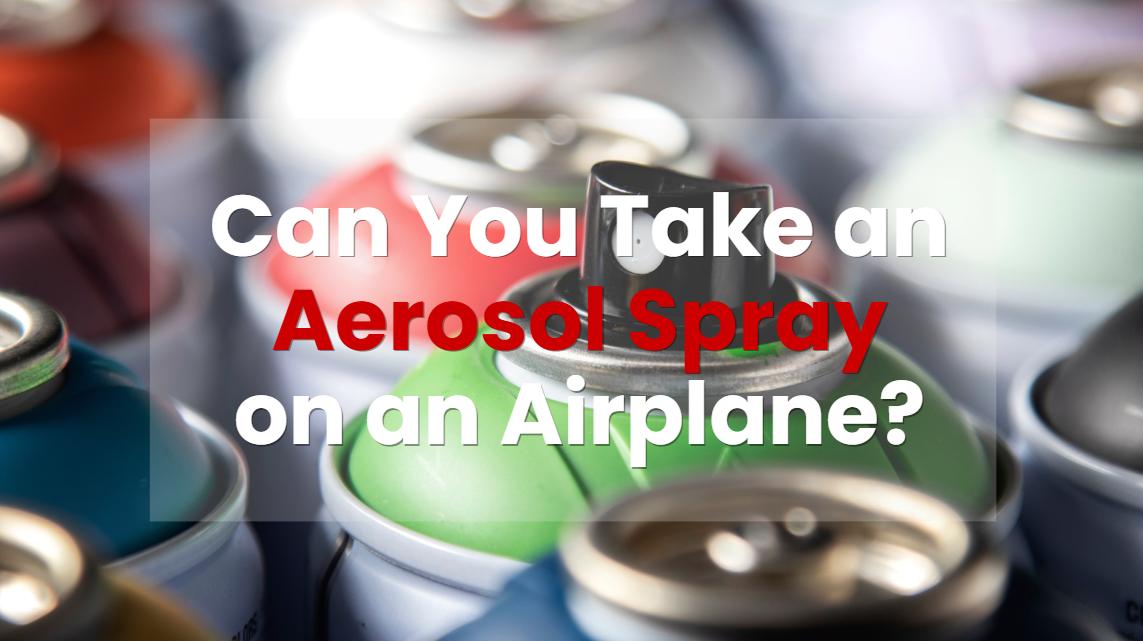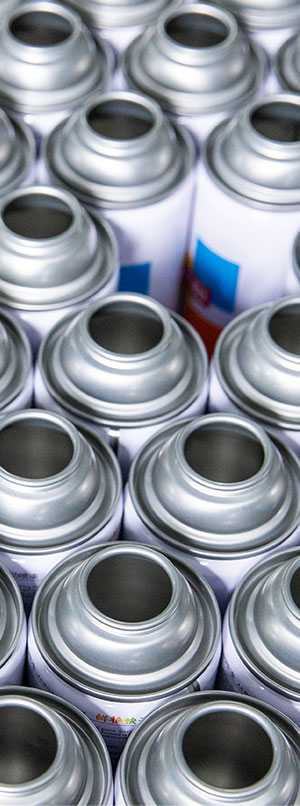If you’ve traveled with an aerosol spray, you may have noticed a confusing pattern. On one trip, your aerosol shaving cream makes it through airport security without a problem. Another time, a similar can gets flagged and tossed out.
The difference isn’t just luck—it depends on what’s inside the can. Whether you can take aerosol spray on a plane hinges on the type of aerosol and how much of it you’re carrying.

What Exactly Is an Aerosol Spray?
In simple terms, an aerosol spray is a product packaged in a pressurized, non-refillable receptacle/can that uses gas to release a liquid, paste, or powder through a self-closing nozzle.
It’s worth noting that not every spray is an aerosol. For example, a pump bottle of alcohol spray or hand sanitizer isn’t considered an aerosol because it doesn’t rely on pressurized gas. It’s just a liquid being mechanically sprayed.
TSA Rules for Aerosols on Airplanes
The Transportation Security Administration (TSA) includes aerosols under its Liquids, Aerosols, and Gels (LAG) rule.
Basically, aerosol containers must be 3.4 ounces (100 ml) or less if you want to bring them in your carry-on bag. They must also fit into your one quart-sized resealable plastic bag along with your other travel-size liquids.
Larger aerosol containers may be allowed in checked baggage, depending on the aerosol type. However, certain aerosols are entirely prohibited for safety reasons.
Below is a breakdown of how TSA treats some of the most common aerosol sprays:
1. Aerosol Spray Paint
Aerosol spray paints are not allowed in carry-on or checked luggage. These are flammable and entirely banned.
2. Aerosol Insecticide
Not allowed in carry-on. Permitted in checked baggage if it’s not labeled as hazardous.
3. Aerosol Bug Repellent
Allowed in carry-on (must follow 3.4 oz/100 ml rule) and in checked baggage (typically up to 18 oz per container, 70 oz total). Only repellents intended for skin application are accepted. Buttons or nozzles must be protected by caps or other means to prevent accidental release.
4. Aerosol Cologne
Colognes are allowed in carry-on (under 3.4 oz) and in checked baggage (under 18 oz per container and 70 oz total). Buttons or nozzles must be protected to prevent accidental release.
5. Aerosol Deodorant
Same as cologne, allowed in carry-on and checked baggage, following the same size limits, with buttons or nozzles protected.
6. Aerosol Shampoo
Dry shampoo is allowed on airplanes (under 3.4 oz) and in checked baggage, subject to the same limits as other toiletry aerosols (70 oz total per person, 18 oz per container). Buttons or nozzles must be protected.
7. Aerosol Hair Texturizer
Allowed under the same rules as other toiletry aerosols.
8. Aerosol Shaving Cream
Allowed in carry-on (3.4 oz or less) and checked baggage (up to 18 oz per container).
Quick Reference Chart
| Aerosol Type | Carry-On(≤ 3.4 oz) | Checked Baggage | Notes |
|---|---|---|---|
| Spray Paint | Not allowed | Not allowed | Considered hazardous |
| Insecticide | Not allowed | Allowed | Must not be labeled hazardous |
| Bug Repellent | Allowed | Allowed | Size limits apply; Only skin-applied repellents; Button/nozzle must be protected |
| Cologne | Allowed | Allowed | Size limits apply; Button/nozzle must be protected |
| Deodorant | Allowed | Allowed | Size limits apply; Button/nozzle must be protected |
| Dry Shampoo | Allowed | Allowed | Size limits apply; Button/nozzle must be protected |
| Hair Texturizer | Allowed | Allowed | Size limits apply; Button/nozzle must be protected |
| Shaving Cream | Allowed | Allowed | Size limits apply; Button/nozzle must be protected |
Bottom Line
Toiletries are generally allowed in both carry-on and checked baggage if they meet size limits. The same applies to medicinal articles. However, aerosols that are flammable or hazardous, like aerosol spray paint, are strictly prohibited. When in doubt, check the TSA’s “What Can I Bring?” tool before you pack. That way, your aerosol stays with you—and not in the confiscated bin at security.
Reference
- https://www.thecompliancecenter.com/the-devils-in-the-details-aerosols/
- https://www.tsa.gov/travel/security-screening/liquids-aerosols-gels-rule
